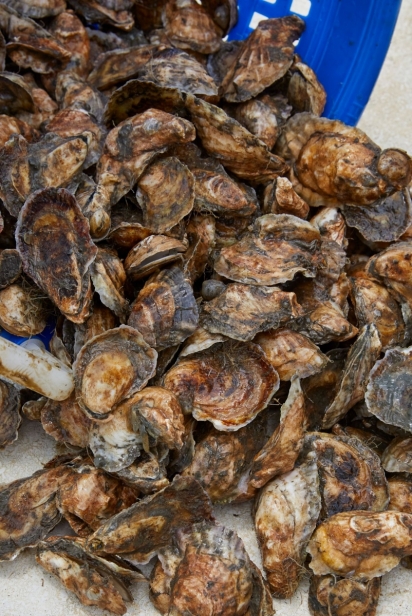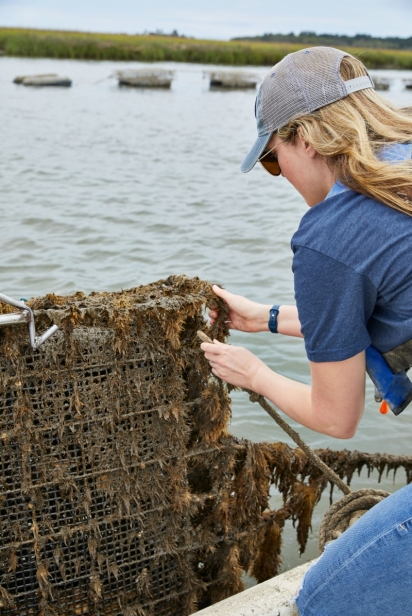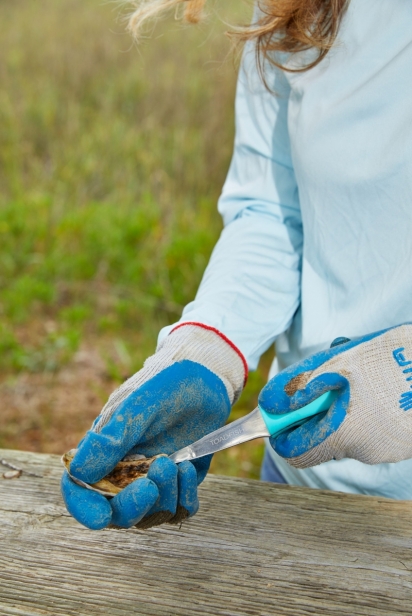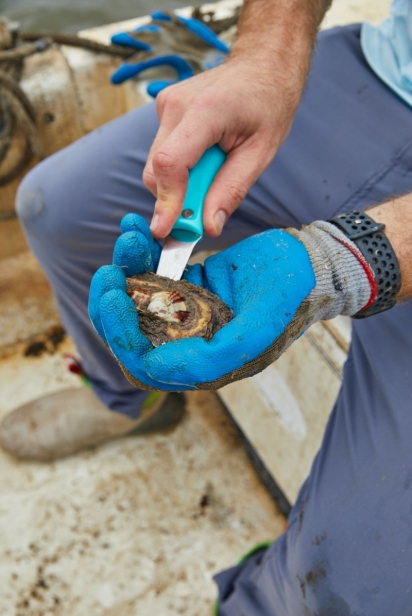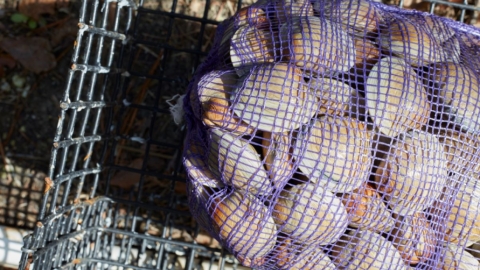Local oyster farmers preserve Lowcountry's lush waterways
Oysters may be a luxurious ingredient, but they don’t start out as the hard-shelled beauties we see nestled on ice at some of the finest seafood restaurants; they’ve spent their lives acting as a bellwether for other aquatic species, filtering the waters around them and sheltering young sea creatures.
That role is why the best oyster farmers don’t just raise oysters, they elevate the environment as well.
“Oysters start their lives as free-swimming larvae, or seeds” says Josh Eboch, co-founder of Charleston’s Barrier Island Oyster Co.. “They spend less than two weeks swimming around looking for a place to land and set and when they set, they begin to develop that calcium carbonate shell we’ve come to associate with an oyster. They prefer to set on other oysters because they figure, ‘If one oyster is living here, then I can do it too,’ which is why it’s so important to put shell out when you harvest oysters. We get clusters because all the oysters pile on top of each other since most of our creeks have too much silt for oysters on the bottom and oysters have to live between low tide and high tide. It’s like New York City. If you can’t go out, you have to go up.”
The Sea Cloud oysters at Barrier Island are raised in floating cages, tumbled by the tide, wind and waves, a process that enables them to not be in clusters, but like their wild counterparts, they still depend on the clean waters around them.
Barrier also offers wild-raised singles they cull from clusters, called BIO Blades, which have a thinner shell than the Sea Clouds and a shallower cup. The BIO Blades are becoming something of a cult favorite.
“We are selling a single that is spawned, set, grown and birth-to-harvest, is in our local creek water,” Eboch says. “These are very local, very unique oysters that can’t be replicated. You simply can’t fake them. It has to come off of these waters to look, taste and present the way it does. The wild oysters are funky looking, but I think that’s the beauty. It’s like an heirloom tomato versus a grocery store tomato.”
Eboch co-founded Barrier in 2015 with his wife, Kendra Tidwell. They began getting permits to farm oysters over the next two years and the company has grown to nine employees, some part-time.
“I don’t have a mariculture or fishing background but I had a desire to move back to Charleston to raise a family and to be on the water,” Eboch says. “I came to this project with a business background since I had an English degree from the College of Charleston. What I had was a love of the subject matter and I knew I liked eating oysters. The rest I’ve learned along the way.”
He has learned well enough that restaurants such as 167 Raw; the Ordinary; the Delaney Oyster House; Charleston Place Hotel; Chubby Fish; The Obstinate Daughter; Hank’s Seafood Restaurant; Leon’s Fine Poultry & Oyster Shop; CudaCo. Seafood House; and Hotel Bennett all buy his oysters. Barrier also landed a contract with Whole Foods in the Southeast and has been selling to them since 2020.
His clients appreciate the vagaries of buying fresh seafood.
“I’ve been selective about the partners we choose,” Eboch says. “It comes down to looking for folks who have an emphasis on the farm-to-table. They understand farming is not like widgets. These are living things. Mother Nature dictates a lot of what can happen. That’s been the keystone of how we develop partner relationships.”
The other keystone is taste. None of the partners would purchase oysters from Barrier if they didn’t like the taste.
“The taste is going to be affected by the water composition and the food and the salinity in the water,” Eboch says. “The wild oysters will have spent a significant portion of their lives in a different part of the same creek near the shoreline, so when the tide comes up, they spend at least part of that time in a deeper section of the water column than the oysters in the floating cages. Some of the food they encounter and eat will be different due to the different depths and proximity to the marsh grasses. There are a few more grass notes in the wild stuff, but it would take a very sophisticated palate to tell the difference between the two.”
As with any farming journey, Barrier’s wasn’t as simple as raising oysters and then providing local seafood restaurants. Oysters take anywhere from one to two years to grow to market size, and Eboch says he likes to harvest at between 15 to 20 months. That can mean that difficulties one year can ripple out years ahead.
“It definitely fluctuated during the pandemic,” Eboch says. “We had trouble getting hatchery seed and, if you can’t get seed, then two years down the road, you don’t have oysters. The biggest challenge is Mother Nature. You can’t control the elements. You can make all the plans in the world, and they can be destroyed. We’re out here pouring blood, sweat, tears and dollars into the marsh, trying to build something and knowing it could be wiped out with the wrong
storm coming in the wrong direction. It has definitely taken longer than we expected because of all the things we can’t control.”
It is this respect for the environment that Eboch says drives Barrier Island.
“This goes way beyond selling seafood,” he says. “Oysters are a keystone species, and the reefs provide habitat to over 100 species. Oysters are more important than just to sell or eat, they help clean the water and help prevent erosion. We put back bushels and bushels of shells each year to provide substrate for the baby oysters to set on. We take it really seriously. We see our role as not just growing and producing amazing seafood, but to educate people, to connect them to the waterways, to help them understand where their food comes from and why it matters. The more oysters you have, the better it is for the marshes. When you eat an oyster, when you slurp that liquor in the oyster, you are literally drinking the marsh creek water it retains inside its shell. It’s fresh from the creek. So, yes, we take clean water very seriously.




